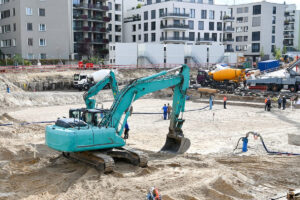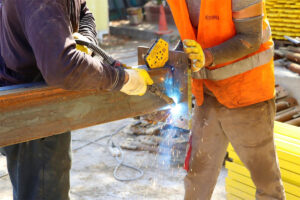
How The Landscape Of Construction Will Change Moving Forward
Like all industries, the construction industry has had to adapt and will continue to adapt to a world changed by COVID-19. It’s not an easy adjustment as social distancing does not exactly coincide with the side-by-side working environment of construction.
Luckily, there are many areas of construction that can be done remotely. For example, video conferencing via platforms such as Zoom, Skype and Microsoft Teams allow meetings to convene at a distance. Working from home has gained popularity among engineers, architects, technologists and project managers, and that trend is expected to continue, at least for the next 12-18 months.
Recruiting for construction jobs is also expected to change, as more and more human resource departments advertise jobs via job websites such as

LinkedIn and Indeed. This allows for social distancing while applying for work and gives construction workers looking for jobs more options. Recruitment will also offer potential employees the ability to work remotely at least one or two days a week, an opportunity that many are finding appealing. In addition, websites geared solely to positions in the construction industry will also be a more efficient way for companies to find workers in the field.
Working on an hourly rather than per project basis is also a potential option for those in the industry that have seen projects cancelled or delayed. This will mainly center on projects that can be done from home, but can provide stability for employees who have lost income due to COVID-19.
Even those projects that require being onsite – the bulk of work in the construction industry – can embrace more health and safety precautions that will include social distancing and other ways to protect employees. New technologies can also be used to monitor and manage projects, from design to execution, in order to lessen the need for workers to be onsite.
Future advances in technologies currently being developed, including software and hardware specifically designed for architecture, engineering and construction; communications tools, drone technology, augmented reality and virtual reality, building information modeling, robotics, cloud software, and  modular construction, are also promising innovations that are becoming and will become standard fare in the industry post COVID-19. In addition, these new technologies are expected to address the increase in labor costs due to safety and health regulations and the labor shortage that has occurred as a result.
modular construction, are also promising innovations that are becoming and will become standard fare in the industry post COVID-19. In addition, these new technologies are expected to address the increase in labor costs due to safety and health regulations and the labor shortage that has occurred as a result.
Over time, the construction site of the future may be fully automated with robotic labor and drones that will monitor projects and deliver supplies. In addition, engineers and architects may be replaced by advanced software capable of handling most if not all of design production. These advances will reduce employee costs, but at the same time increase safety. And those tasks that do require the human touch will be handled offsite. While change is always difficult and involves the disappearance of job positions, in the end these modifications will benefit the construction industry as a whole.
